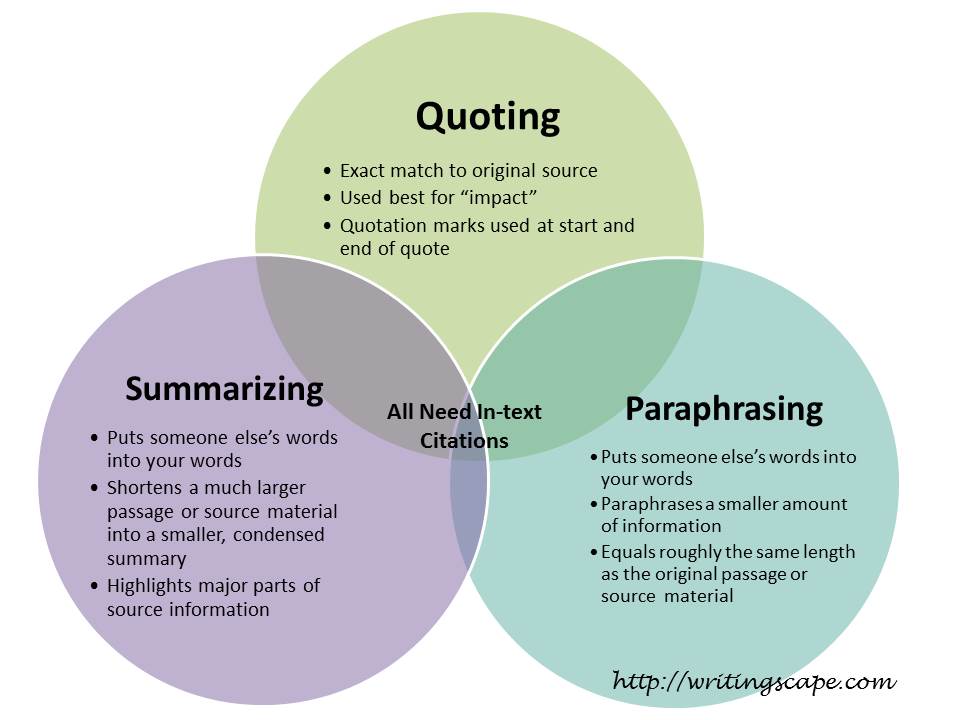

These three ways of incorporating other writers' work into your own writing differ according to the closeness of your writing to the source writing.
Quotations must be identical to the original, using a narrow segment of the source. They must match the source document word for word and must be attributed to the original author.
Paraphrasing involves putting a passage from source material into your own words. A paraphrase must also be attributed to the original source. Paraphrased material is usually shorter than the original passage, taking a somewhat broader segment of the source and condensing it slightly.
Summarizing involves putting the main idea(s) into your own words, including only the main point(s). Once again, it is necessary to attribute summarized ideas to the original source. Summaries are significantly shorter than the original and take a broad overview of the source material.
Quotations, paraphrases, and summaries serve many purposes. You might use them to:
OTHER HELPFUL WEBSITES FOR QUOTING, PARAPHRASING, AND SUMMARIZING
The University of Arizona Global Campus - Quoting, Paraphrasing, & Summarizing: Explore 3 ways of including the ideas of others into your academic writing
UNSW Sydney - Paraphrasing, Summarising and Quoting - Quoting, paraphrasing and summarising are all different ways of including the works of others in your assignments.
A quotation is an exact reproduction of spoken or written words. Quotes can provide strong evidence, act as an authoritative voice, or support a writer's statements. For example:
Bell and Bell (1993) point out in their study of Australian-American cultural relations: "culture is never simply imposed 'from above' but is negotiated through existing patterns and traditions." (Bell & Bell 1993, p. 9)
Quoting should be done sparingly and support your own work, not replace it. For example, make a point in your own words, then support it with an authoritative quote.
Paraphrasing is a way of using different words and phrasing to present the same ideas. Paraphrasing is used with short sections of text, such as phrases and sentences.
A paraphrase offers an alternative to using direct quotations and allows you to integrate evidence/source material into assignments. Paraphrasing can also be used for note-taking and explaining information in tables, charts and diagrams.
Paraphrase short sections of work only i.e. a sentence or two or a short paragraph:
A summary is an overview of a text. The main aim of summarising is to reduce or condense a text to its most important ideas. Leave out details, examples and formalities. Summarising is a useful skill for making notes, writing an abstract/synopsis, and incorporating material in assignments.
Summarise long sections of work, like a long paragraph, page or chapter.
The amount of detail you include in a summary will vary according to the length of the original text, how much information you need, and how selective you are.
"Paraphrasing, Summarising and Quoting." UNSW Sydney, 16 Feb. 2024, www.student.unsw.edu.au/paraphrasing-summarising-and-quoting. Accessed 15 Apr. 2024.